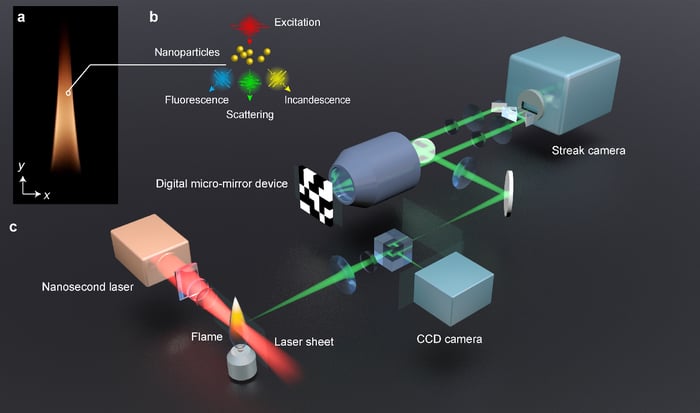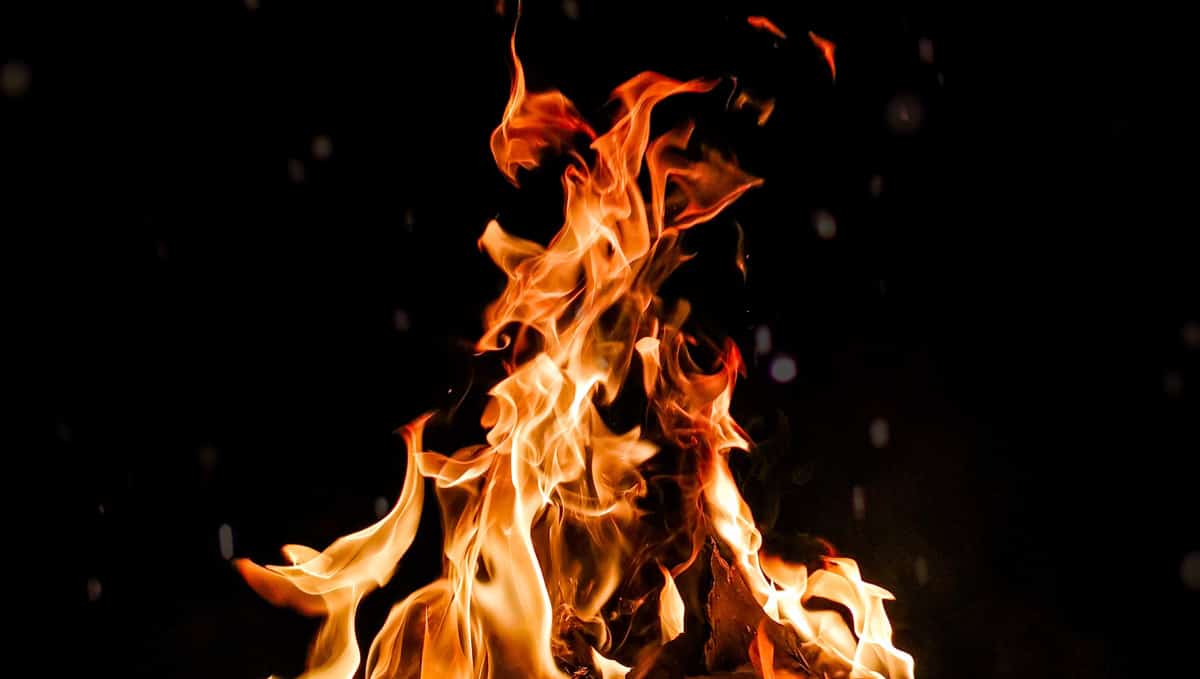
An ultrahigh-speed single-shot laser camera has imaged how hydrocarbons burn with the greatest detail yet. As well as shedding fresh light on the processes that occur during combustion, the technique – developed by a team of physicists and engineers at the California Institute of Technology in the US, the University of Gothenburg in Sweden and Friedrich-Alexander-Universität Erlangen-Nürnberg in Germany – could help unravel fundamental mysteries in modern physics such as hot plasma, sonoluminescence and nuclear fusion, say the researchers. The technology could also come in useful for biomedical imaging and for observing how light propagates in materials in real time.
The polycyclic aromatic hydrocarbon (PAH) molecules and soot particles produced when hydrocarbons are burnt have extremely short lifetimes (on the order of nanoseconds) and combustion reactions in general are very fast and one-shot – that is, they are not repeated. Studying combustion therefore requires ultrafast imaging to capture these processes.
The researchers, led by Yogeshwar Nath Mishra, created a laser camera that can do just this by producing videos at a record-fast speed of 12.5 billion images per second. This is at least one thousand times faster than current high-speed techniques that are limited to a million frames-per-second (fps). The new device works by photographing a material in a two-dimensional layer using a technique called single-shot laser sheet compressed ultrafast photography (LS-CUP).
The method is based on firing a single nanosecond-duration laser pulse onto a sample, in contrast to previous techniques that used multiple pulses to achieve a million fps. These pulses can change the physical and optical properties of soot as the laser adds energy and heat to the system.
“The technique allows us to extract critical parameters from the fast dynamics occurring during combustion, such as the fluorescence lifetimes of PAH molecules (which are hazardous to the environment), soot nanoparticle sizes, soot cluster sizes and particle temperature,” explains Mishra. “We have for the first time taken a single-shot 2D image of PAHs at 1.25 billion fps and, from the laser scattering images, obtained maps of the size of these hydrocarbons.”
Combining two imaging modalities
In this study, the team combined two imaging modalities: laser sheet (LS) imaging and compressed ultrafast photography (CUP). “A laser sheet essentially intersects a 2D plane of a 3D sample,” explains Mishra. “It therefore provides a spatial and temporal profile of the dynamics occurring in the probed plane, for example, turbulence and the interaction between different chemical species. To perform single-shot imaging, we apply a compressed sensing algorithm on a standard streak camera image,” he tells Physics World.
The camera can film chemical species like PAH and soot in real-time, on the order of nanoseconds to sub-nanoseconds, Mishra adds. “With a billion fps, it is possible to see how soot evolves from PAH. Another advantage is that we can record two species at the same time because the camera has two high-speed channels – something that is extremely useful for quantitative imaging.”

Fuel flow, pressure and heat fluctuations drive combustion oscillations in rocket engines
According to the researchers, who report their work in Light: Science & Applications, the new camera could be combined with pre-existing planar imaging methods for combustion research. Aside from such studies, LS-CUP could also be used for real-time observations of hydrogen combustion, plasma-assisted combustion and metal powder combustion, they say.
As for future work, Mishra says he and his colleagues will now be looking to perform real-time ultrafast imaging for PAH molecule sizing using femtosecond-duration pulses by implementing two-channel fluorescence anisotropy with their current scheme. “We are also studying the impact of high laser fluence in soot oxidation and graphitization – processes that could be essential for fabricating carbon-based nanomaterials for a host of technological applications,” says Mishra.
